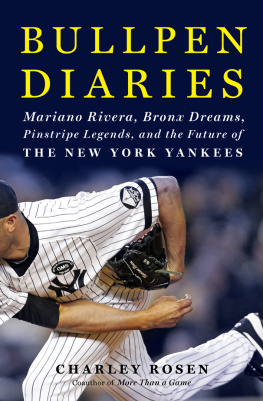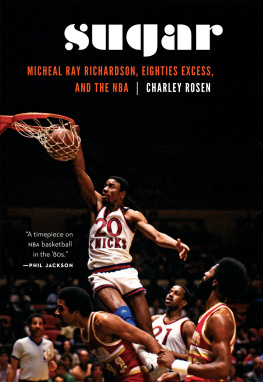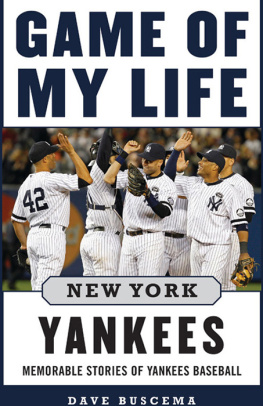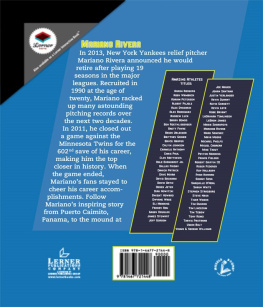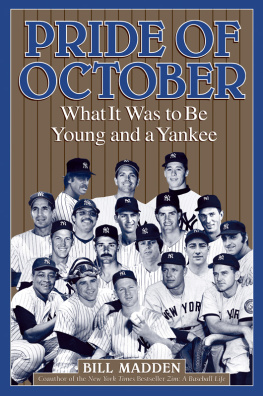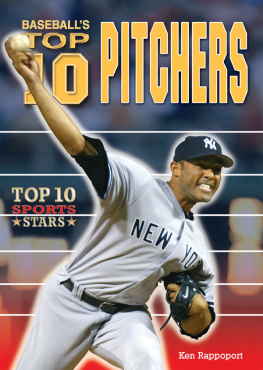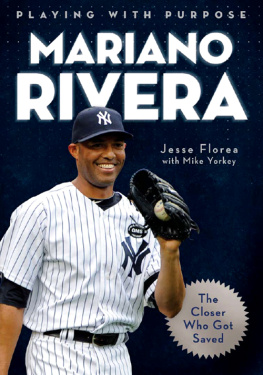T O THE LATE B OB F ELLER,
A GREAT MAN AND A GREAT PITCHER
Baseball is ninety percent mental and the other half is physical.
Yogi Berra
Contents
Any baseball is beautiful.... It is a perfect object for a mans hand.
ROGER ANGELL
B aseball is the only American sport where the defense has the ball.
Moreover, theres a case to be made that no action in sports puts into play more possible outcomes than a baseball thrown from a pitchers hand, and, arguably, no team player in all of sports is more on the spot than a relief pitcher.
Indeed, with the game on the line, all eyes in the stadium and at home are fixated on that lonely soul on the mound. Hes even elevated a foot or two above the other players to emphasize both his importance and solitude. Yes, the starting pitcher has a ton of pressure, but while he has time to work things out, the reliever has to come through ASAP. We also watch the hitter, of course, but there will be many of them in succession.
If relief pitchers are unable to take full advantage of favorable matchups at least 8090 percent of the time, they are liable to get canned faster and more often than any other players.
I N WRITING this book, I have conducted hundreds of hours of in-person and phone interviews with people throughout the Major League Baseball community. Every quote or anecdote you read in these pages comes to me firsthand or from verifiable sources. All of the opposing-team scouts spoke to me on the condition of anonymity.
I charted every Yankee relievers pitch of every game in the 2010 season, but for the sake of my sanity (and yours) I recount in detail only the most important or eventful games, especially those against the Yankees most intriguing foes: the Red Sox, Rays, Rangers, Mets, and Dodgers, as well as the games that were turning points in the seasonor in a relievers career. I grade every relievers performance, and also reveal baseballs own pitch-grading system.
Every 2010 game is touched on in some fashion; its a long season but, as they say, every game counts. (Updates and commentary on 2011 can be found at BullpenDiaries.com.)
A T APPROPRIATE points throughout this book, I insert player and coach interviews, scouting reports, goings-on with other teams, and current perspectives on player evaluation and game strategy, as well as the Yankees bigger plans, from the Bronx to the minor leagues. My primary focus is on the bullpen, but one cannot separate their role from that of the starters, defenders, and yes, the hitters.
Still, the bullpen is first and foremost. And as a former athlete myself, I am fascinated by the mechanics of pitching, especially the difficulty of repeating the throwing motion, particularly under in-game pressure. This is similar to the workaday efforts that a basketball player spends on his shooting stroke or a QB on his own throwing motion.
I will also provide several historical perspectives: the evolution of the relief pitcher in baseball, stories about eccentric relievers over the years, some myths about pitch count, a little Yankee trivia, and true stories about all-time Yankee pitching greats (including a wonderful conversation about knuckleballers between Yogi and Joltin Joe).
Lastly, I have resurrected several personal memories, hopefully for your nostalgic enjoyment, concerning my boyhood proximity to Yankee Stadium.
The 2010 season ended up being a disappointment for the Yankees, and for Yankee fans, but much can be taken from last year as we look ahead to 2011, particularly the future of the bullpen. Additionally, any baseball fan has to admit that 2010 was a pretty amazing yearthe Year of the Pitcher, a year of bizarre walk-offs and blown calls, with both broken records and broken legsand many of these reminders and recapitulations will surprise you.
T ODAY S PROFESSIONAL athletes have it easier than ever, but they still put in a full days work, often late into the night, in front of adoring or heckling crowds, then head off to a 2 A.M. flight to another city, another hotel. Long gone are the easier days of travel in a geographical box circumscribed by the original major league cities of Boston down to DC, over to St. Louis and up to Chicago, an area only one-twentieth the size of this country.
Ballplayers today make a ton of money, and we think we would trade places with them in a second, but it can all go away in a heartbeat: a torn elbow or knee ligament, a string of bad games, and then its over, someone always ready to take their place on the field.
It is of utmost importance to me to be true to those who play their hearts out for a game that I love, a game that is also a business, but one that we still call our national pastime. I have a journalistsand a fansimpatience with a player who isnt successful, but I still root for them, always.
Ive been lucky enough to make sports my vocation and avocation. I set several basketball records at Hunter College in New York, coached in the Continental Basketball Association alongside Phil Jackson, and then went on to coach on my own. I coauthored a bestselling book with Phil, penned many more books and magazine articles, and now make my pro hoops column deadline several times a week for two national sports websites. And I still get a thrill out of the tension in a basketball locker room, hearing the noise of the crowd just outside the door. The joy of teamwork, the sweat, the winning. And yes, the badges of injury: a broken nose, a few loose teeth, an achy knee.
Even so, baseball was my first love. Since I grew up in the shadow of Yankee Stadium, my childhood was measured by the dozens of Yankees games I attended every spring, summer, and fall. If I wasnt good enough to play the game on a professional level (I had a pitching tryout at Yankee Stadium after college), Ive always wanted to capture the humanity of big league baseball as well as the universe of numbers that governs the gamesome real, some overstated in importance. Baseball is a game of fractions and emotion, stats and action, head and heart.
Here is the account of a year in the life of a bunch of guyssome famous, some not-yet, some already out of the game as you read thiswho put on Yankee pinstripes, grabbed glove and ball, warmed up in the bullpen, and then walked out into the glare of the most intense spotlight in professional sports to try to throw a ball past the games best hitters, and won or lost.
T HE BOOK concludes with my predictions for 2011as well as an overview of the Yankees team-building strategy over the yearsbut first a brief comment about the firing, within a few days of the seasons end, and while I was finishing this book, of pitching coach David Eiland.
Every player or scout I spoke to had nothing but praise for Eiland, and as you will see, it runs throughout this book. His firing, for unexplained personal reasons, does not diminish one iota what he accomplished for his players and team. It remains to be seen how his successor, Larry Rothschild, performs, but I was hoping Eiland would be succeeded by Mike Harkey, whom I spoke to this year and got a good feeling for.
Lets see how it all plays out in 2011, hopefully a season where the Yankees can put all the pieces together for another run to the World Series.
First, lets see how we got to this point in baseball bullpen history.
Great relievers of the past, Mariano Riveras
impressive stature, spring-training preparations, the
farm system, and a quiet Stadium moment
Baseball is a game where a curve is an optical illusion, a screwball can be a pitch or a person, stealing is legal, and you can spit anywhere you like except in the umpires eye or on the ball.
JIM MURRAY, SPORTSWRITER
T he first reliever to achieve a measure of distinction was Firpo Marberry (Washington, Detroit, NY Giants/192336). A sometimes starter, he relieved in 365 of his 551 lifetime appearances. Six times he led the American League in games pitched, and he also was MLBs leader in saves in five seasons.
Next page
